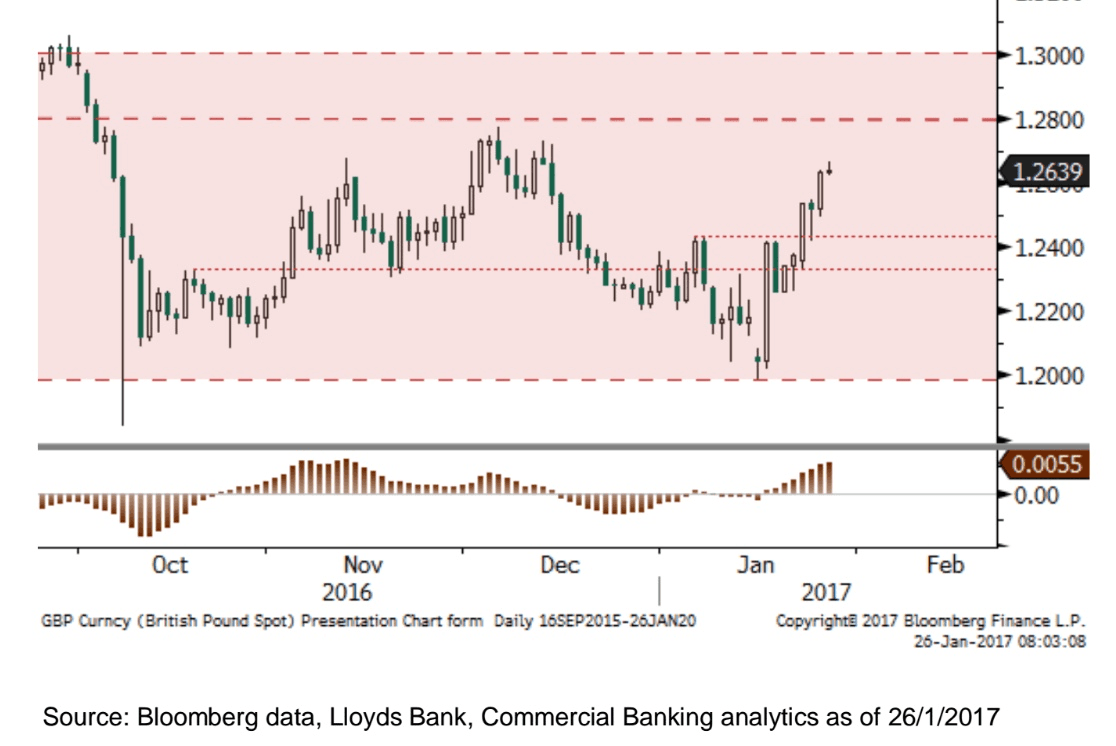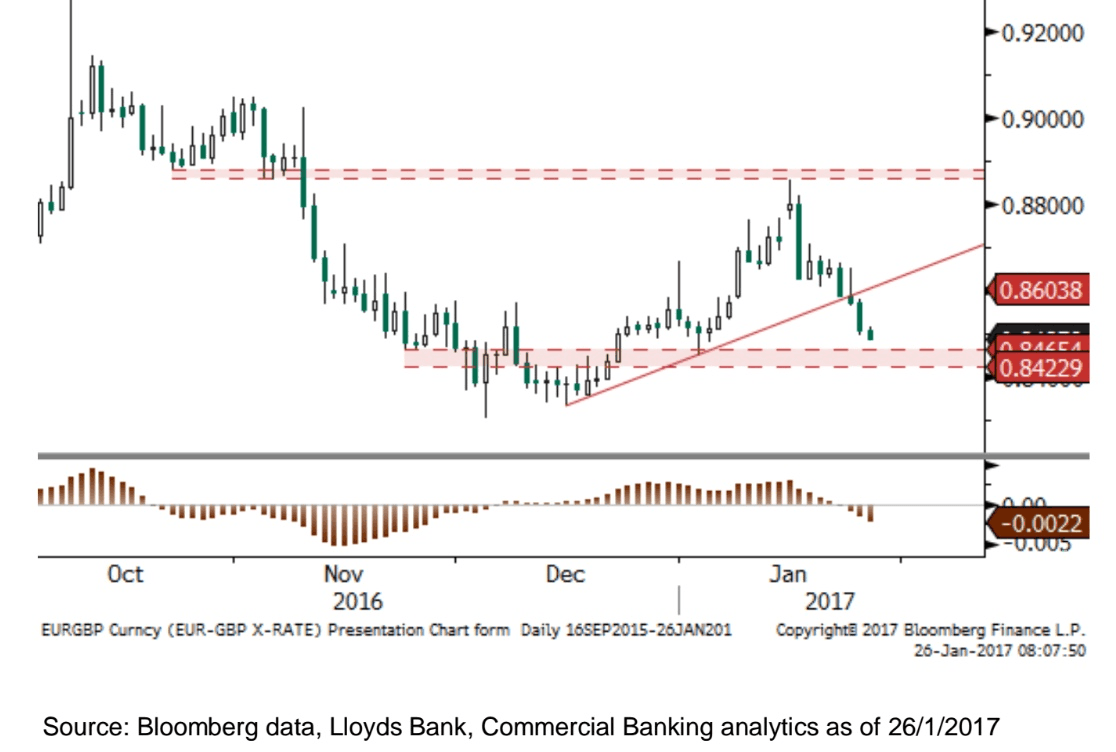British Pound to Struggle Against Euro, Dollar as Heavy Barriers Encountered

The Pound has fallen back to reality over the course of the past 24 hours having recorded a fresh six-week high against the Dollar, bringing to an end its best run since the 1990's.
The currency's impressive recovery rally through the second-half of January takes it towards the upper end of established ranges against Euro and Dollar and this would suggest further gains become hard to achieve as the market is structurally positioned to resist advances beyond here.
Technical strategist Robin Wilkin at Lloyds Bank Commercial Banking has analysed the current state of the markets and says the Pound is tapping up against the upper limits of its established ranges against both the Euro and Dollar.
“Sterling continues to surprise the market with its resilience, coming back strongly since its lows set in Asia on Sunday 16th January, but we are starting to approach the other side of the current ranges in terms of GBPUSD and EURGBP,” says Wilkin.
The call comes as the Pound is seen retreating against the two currencies despite some positive economic data in the form of Q4 2016 GDP data being released.
The Pound to Dollar rate is trading lower at 1.2562 having gone as high as 1.2674 earlier in the week.
The Pound to Euro rate has fallen back to 1.1747 having been as high as 1.1806 at one point this week.
With regards to the EUR/GBP exchange rate outlook, Wilkin notes a strong barrier:
“The cross continues to push lower, but is approaching our target region of 0.8450-0.8400. Intra-day studies are warning the downside maybe limited too.”
From a GBP into EUR perspective this translates into an upside resistance target of 1.1834-1.1905.
We have seen GBP nudge on 1.18 already this week but so far resistance has proven strong.
We would anticipate further consolidation in order for the Pound to gather the necessary energy to break higher.
There is the chance that the Pound could enter a period of consolidation as this key area is tested by the markets.
The resolution will come in the form of a return back into recent ranges or a break-out towards those levels witnessed in December.
Looking at the GBP/USD exchange rate, Wilkin says intra-day studies are warning the upside may be limited.
“GBPUSD found itself retreating from recent highs in line with the broader USD rally," notes Wilkin.
Lloyds Bank Commercial Banking still see the 1.28-1.30 region as key and while under here we continue to look for further development in the medium-term range.
“Pullbacks are likely to see 1.2450/25 tested," says Wilkin who believes if this region is broken then a fall to 1.2250 is possible.
However, the rally is not necessarily dead but only a break-up through the 1.30 region would allow for a test of highs from last summer at around 1.35.

Our own studies suggest some gains towards the mid-1.27s are possible ahead of resistance being met here.
If the market did break-up through the 1.30 region, Wilkin says there is little until the reaction highs from last summer around 1.35.
Analyst Shaun Osborne at Scotiabank notes intraday price action looks weak.
"Hourly price patterns reflect a bearish outside range reversal off the 1.2670/75 area and subsequent losses have “confirmed” the turn lower in short-term price trends," says Osborne.
While broader patterns remain bullish - bullish weekly reversal last week - the short-term weakness may extend to test trend support at 1.2535.
"A break under here risks sending Cable another big figure lower to the 1.24 area," says Osborne.
Also becoming wary of Sterling's prospects at this juncture is Ned Rumpeltin at TD Securities.
"We continue to expect further downside for sterling against the USD and some other G10 currencies over the next several months," says Rumpeltin.
TD Securities note that Sterling's core currency fundamentals remain weak - the UK maintains the largest current account deficit amongst G10 economies by a wide margin.
Meanwhile consumers are vulnerable to rising inflation which could see them reduce spending. And if recent GDP data teaches us anything - it is this spending that is allowing the economy to outperform.
However, TD Securities believe a recovery lies ahead. "Our outlook does suggest, however, that the pound should find a bottom and see a recovery in the second half of this year," says Rumpeltin.
Near-Term Outlook: It's Still About Politics
With Sterling being a politically-inspired currency at present, it should come as no wonder that eyes will be turned to the first official meeting of Donald Trump and Theresa May on Friday.
Foreign exchange markets will be keen to hear any details concerning the potential of a trade deal being struck between the US and UK following Brexit.
As one analyst notes here, any details on a trade deal could be a positive for Sterling.
Of course the UK can only negotiate once it leaves the EU, but if there is talk of a deal being struck it could aid the UK's hand in upcoming negotiations.





